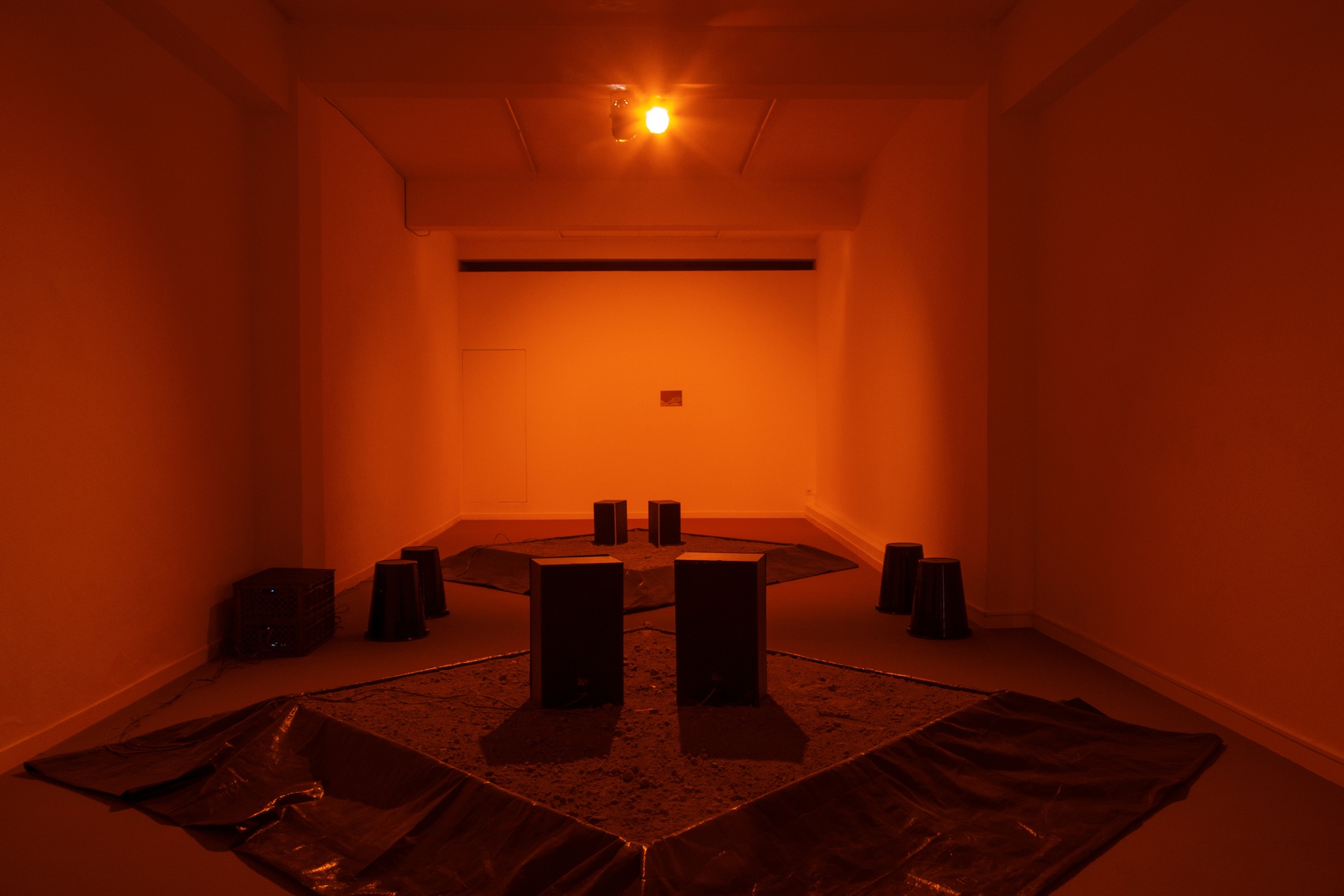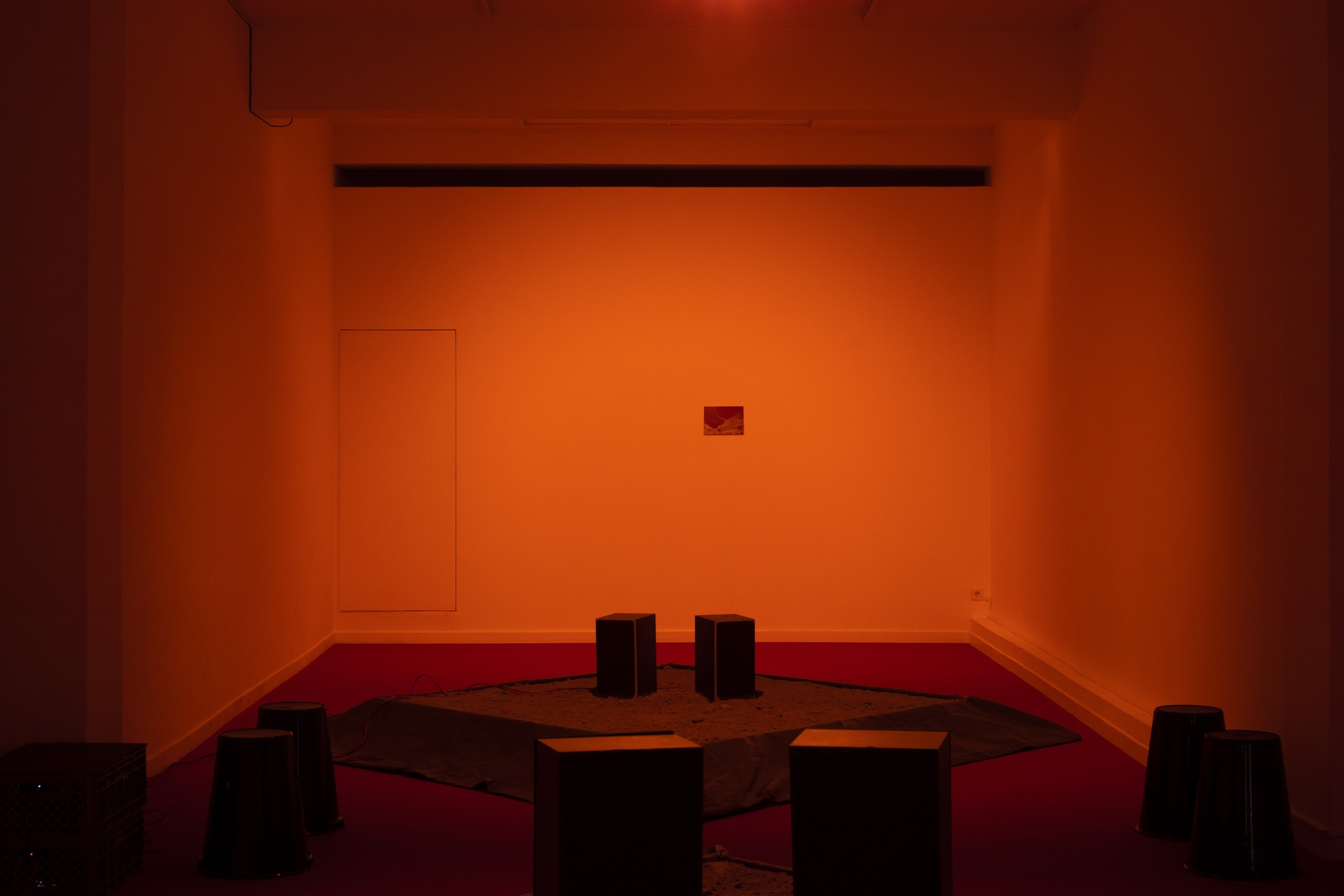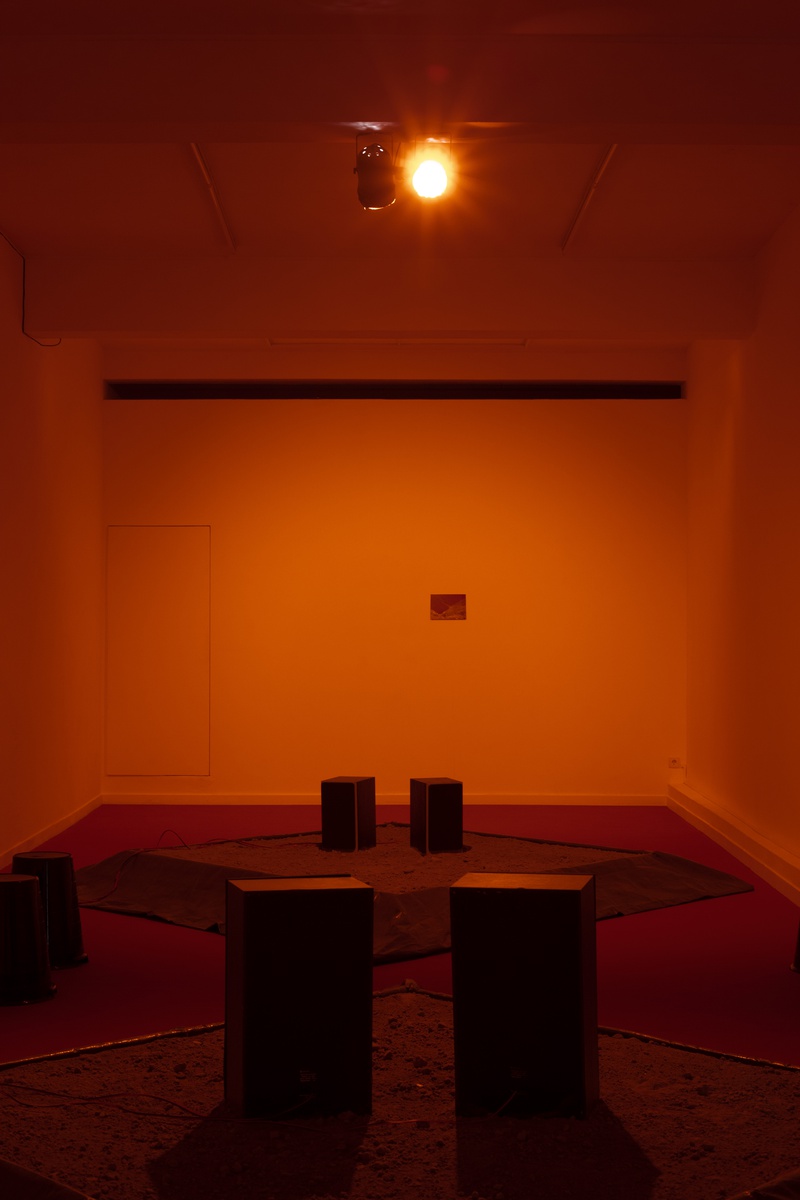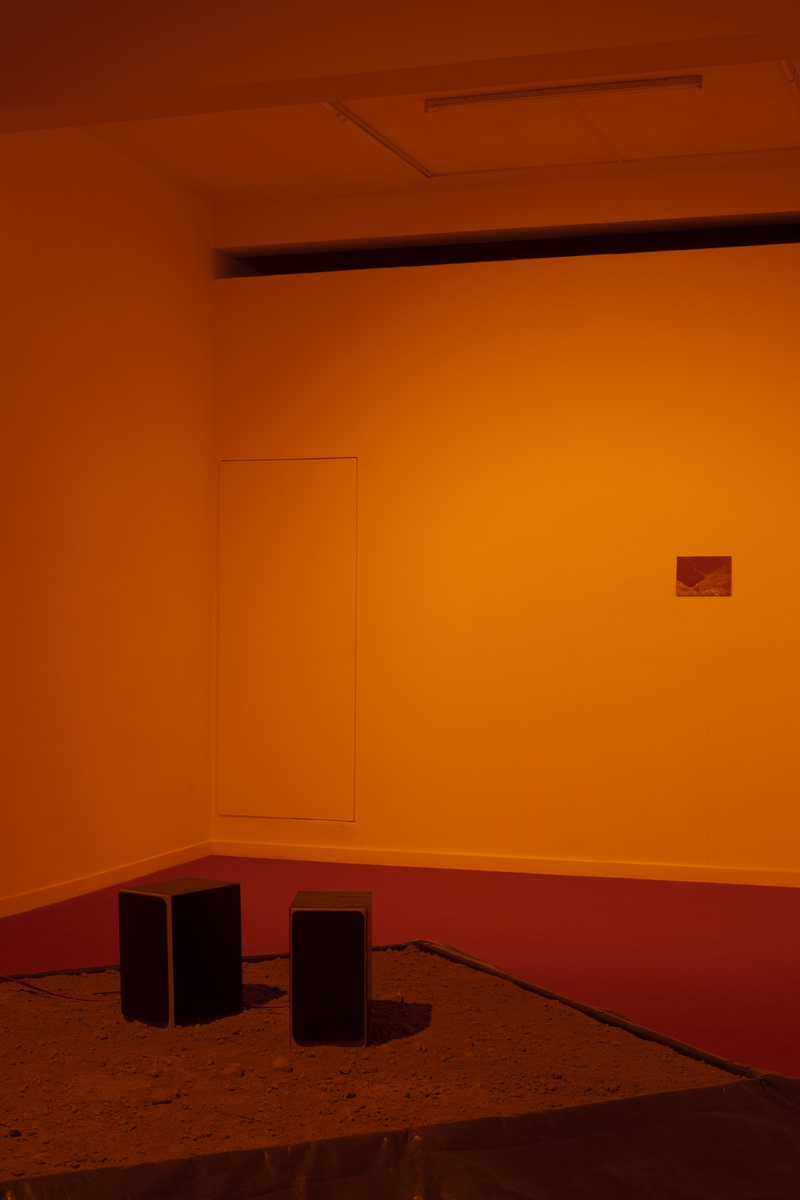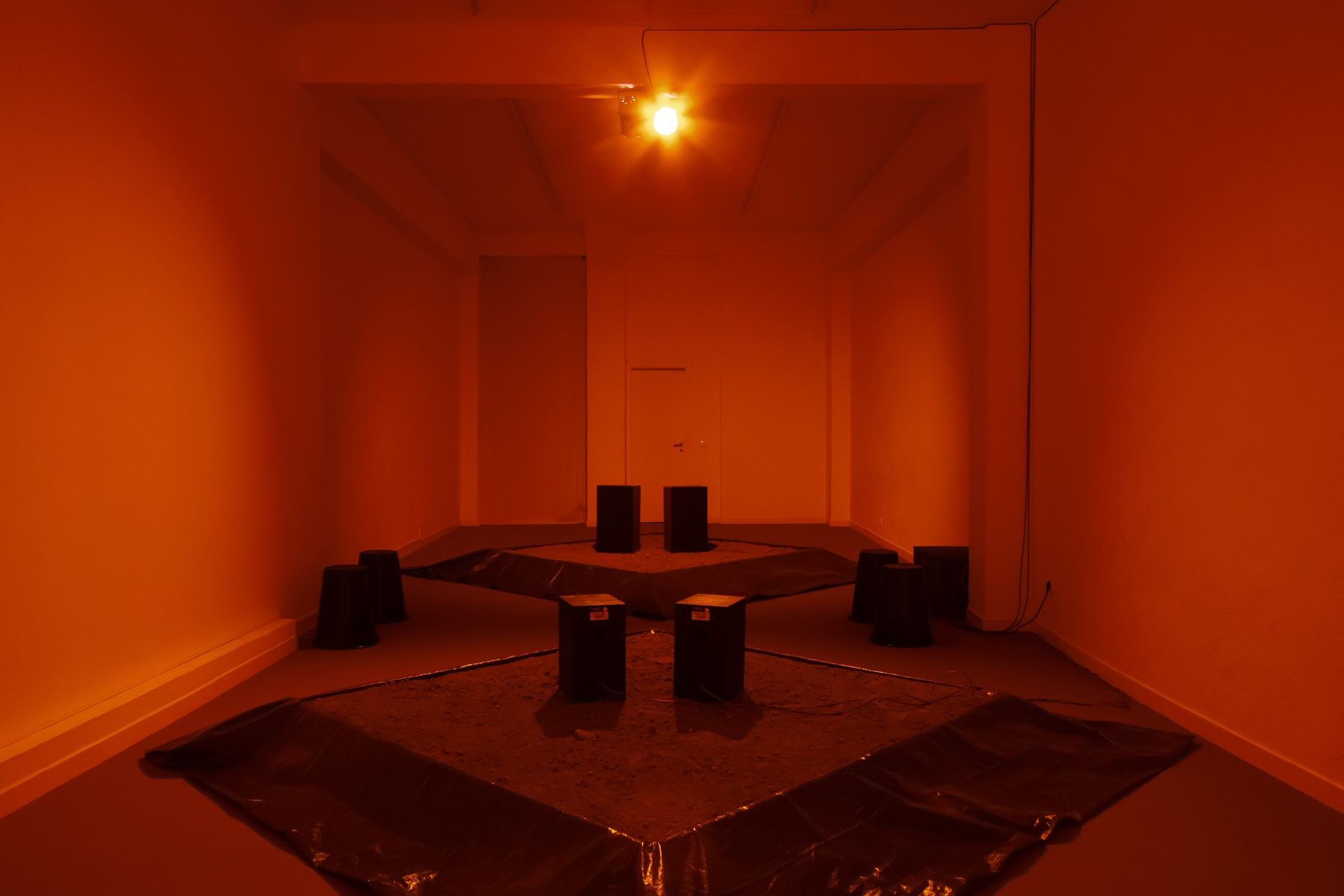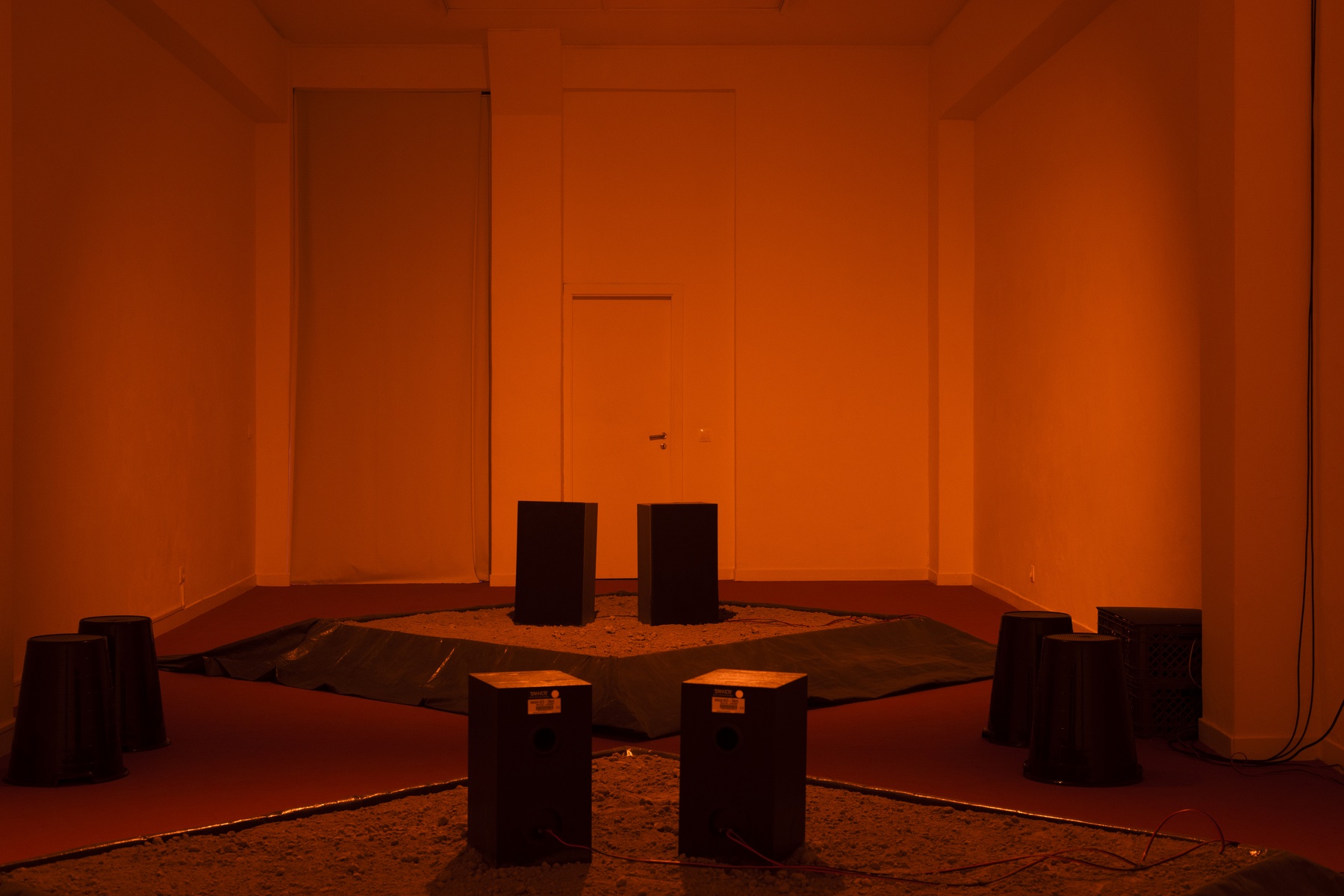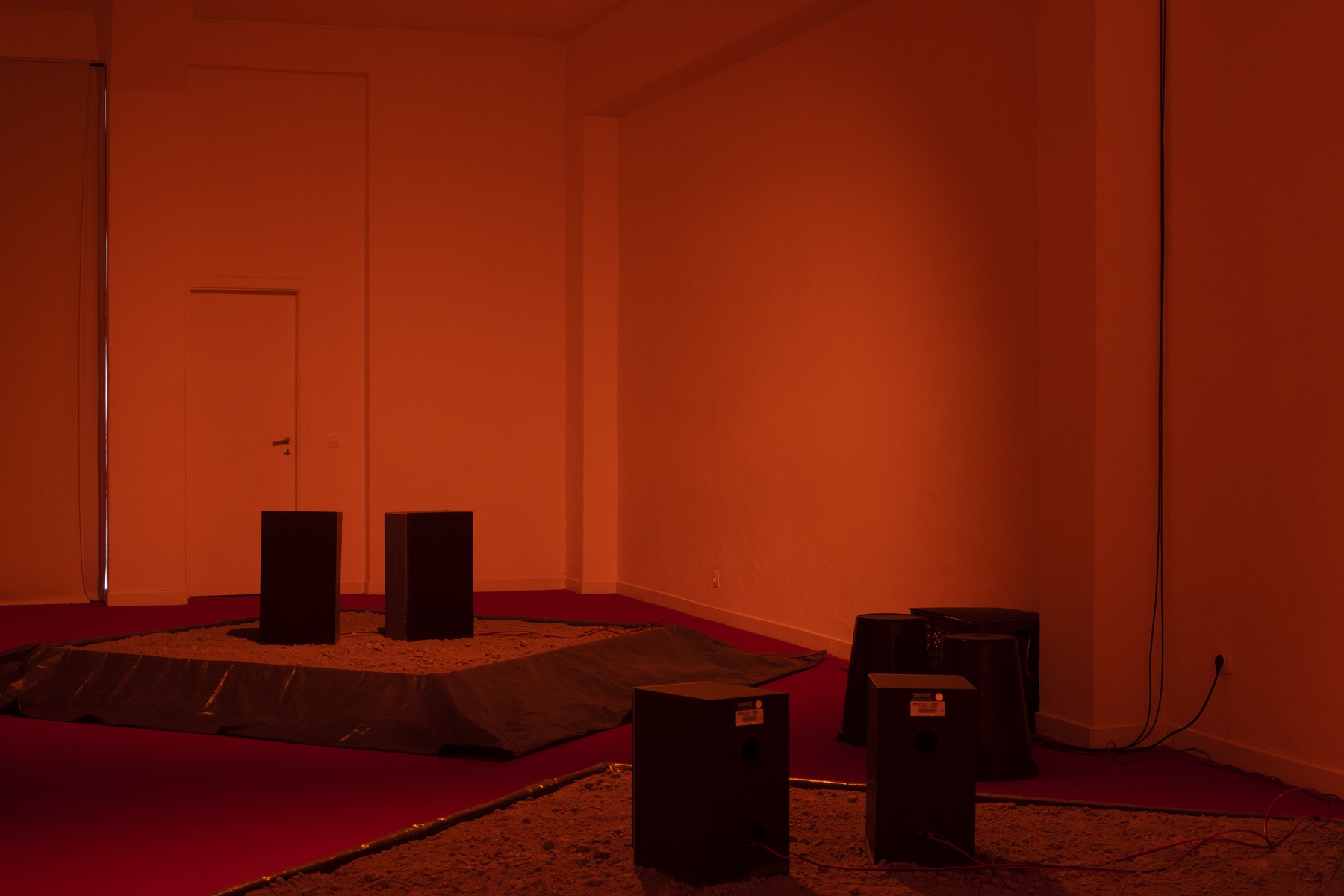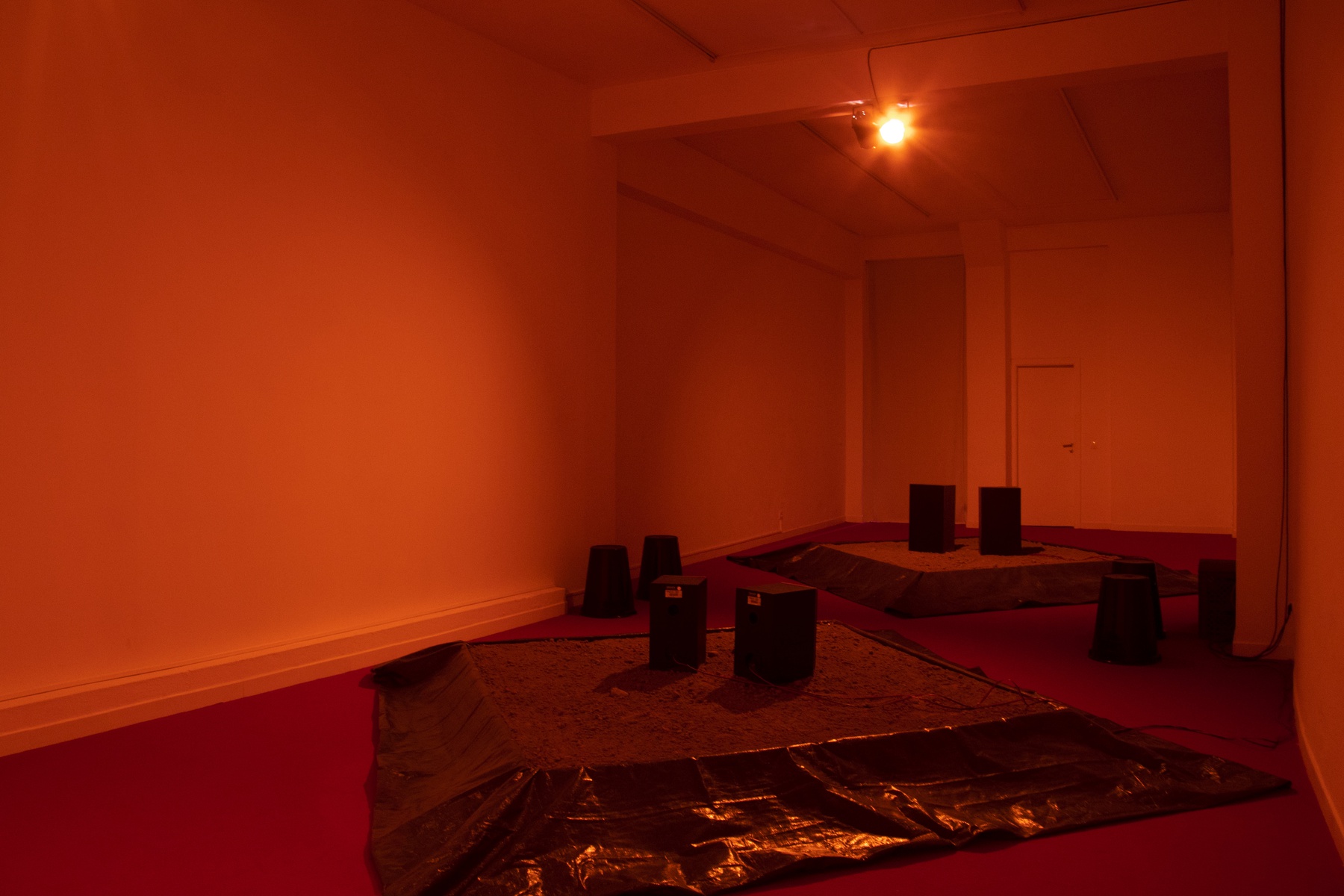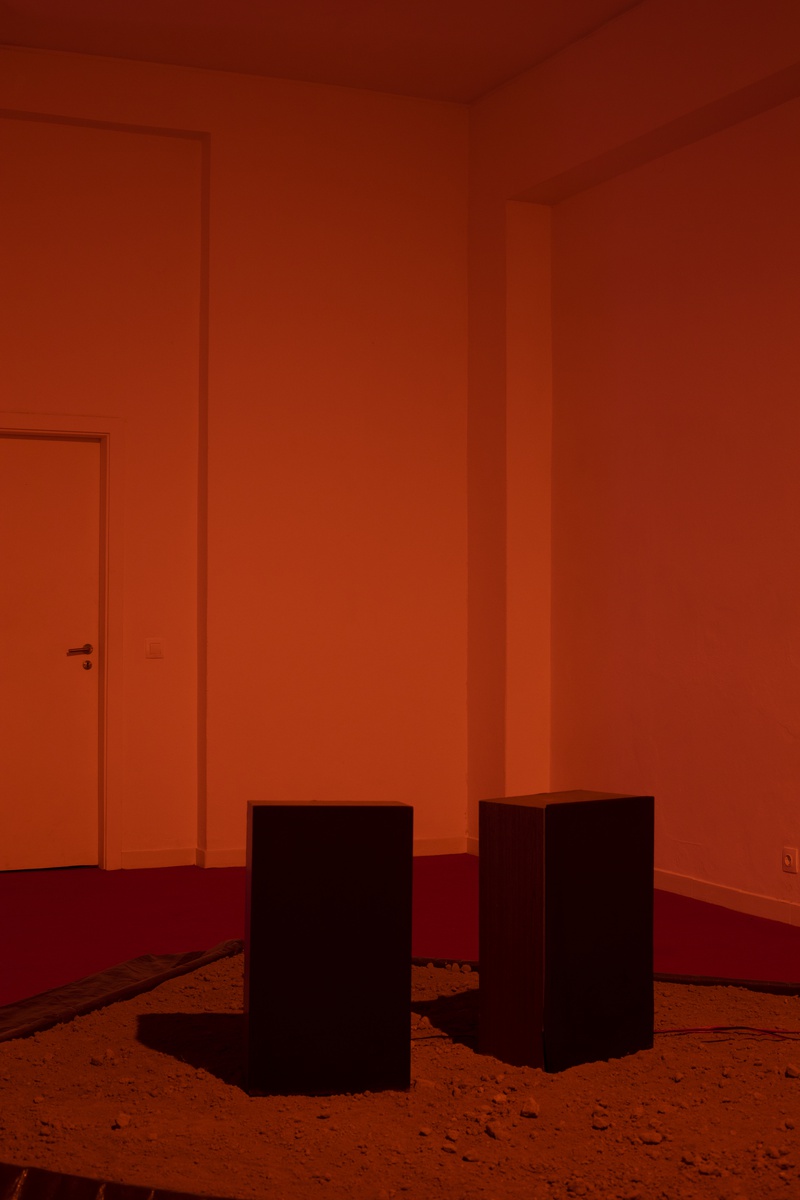A Field
Exhibition
28 Jun – 30 Jul 2021
What might it mean if we were to think of mining not as extraction but rather as exhumation? What difference would it make to use this word instead? A word that indicates not merely the drawing out of matter from somewhere, but more precisely the unearthing of matter, the unburying of dead matter. If we exhume the various meanings that lie in the word exhumation itself, we can start to understand its relation to soil (humus) and thus its relation to the human (a being close to the earth, ”earthling”). Understanding mining as exhumation therefore implies the digging up of the dead as a specifically human endeavour. Indeed, the unearthing and burning of fossil fuels for capitalist production have led to the rapid demise of the planet at the hands of some humans. This could be the particular necrontology of mining; the configuration of existence (energy/capital) through death (fossil fuels/climate crisis). More exactly, mining is nothing but necrontological, in that it can exist only in and through the exploitation and production of death.
After mining, humans alter the very geology, topography, hydrology and ecology of the sites they exhume, leaving behind irreparable damage that causes more death through poisoning of water supplies and food chains, and exhaustion and toxification of the earth. When a mine ceases to be used, its defunct buildings form a new cadaver that sits above ground, watching over the entrances into the underworld that machinery once bored into the landscape. In this light, the disused mine is a zombie-like creature, hinged upon the border between life and death. It gives rise to a monstrous new landscape born from toxicity, yet its only legacy is one of death. “We therefore commit this body to the ground, earth to earth, ashes to ashes, dust to dust; in sure and certain hope of the Resurrection to eternal life.”
This exhibition is the second moment of a conversation around music, histories of struggle, the development of industrial capitalism, and other situations that unravel from these threads. The first conversation focused on the transformations of industry in the Ruhr region of Germany, as well as musical histories that ran parallel to its genesis, both in Germany and in other countries, such as England in the 1980s. We listened to music made under Margaret Thatcher's reign and the economic policies on mining and the uprisings around the country due to various social pressures of the 1980s.
After the exhumation, the transfer of four bodies of sound remains. These bodies spent years under the surface, wrapped in a land that was not their own. Unidentified remains in the field.
Music and sounds coming from others - played in response to and in counterpoint with the work of Michel Giacometti and Fernando Lopes-Graça, with Jorge Peixinho, with Clotilde Rosa, with José Afonso, with Luís Cília, and so many others.
The abandonment of São Domingos mines in 1966 and their continuous process of oxidation and release of heavy metals resembles certain cultural strategies of heritage preservation, both in the dictatorial past and in the neoliberal present. Extractivist-capitalist ambitions prove that everything is a target for capture; the common disappears - subject to having to make claims for the preservation of life, land, home, activity, and artifacts.
This exhibition features contributions from Maria Reis (using reworked extracts of poems by Virgínia Dias), Filipe Felizardo (playing to Francisco dos Reis) and Vasco Lé Dias. Alongside the exhibition, a facsimile print of essays by Dulce Simões, Mário Vieira de Carvalho and Airton Caesar Monteiro.
João Polido Gomes is a composer and artist from Marinha Grande, lives in Lisbon, and studies at the Dutch Art Institute (2020-2022). Edits and acts music under the name of Polido. Recent music releases include Sabor A Terra & A Casa E Os Cães (Holuzam, 2020), and Música Livre/Free Music (author edition with Spirit Shop support, 2019). He collaborated as sound director and composer for the films of Louis Henderson, Madalena Fragoso e Margarida Meneses, Romana Schmalisch & Robert Schlicht, Filipa César and Marte Eknæs & Michael Amstad. Throughout edit and dissection of digital techniques of sound processing, his work focus on the sound as material and tool to approach and articulate questions of language, archive, and history of music.
Louis Henderson is a filmmaker and writer who experiments with different ways of working with people to address and question our current global condition defined by racial capitalism and ever-present histories of the European colonial project. Since 2017, Henderson has been working within the artist group The Living and the Dead Ensemble. Based between Haiti and France, they focus on theatre, poetry and cinema, their first feature film Ouvertures was awarded a FIPRESCI special mention at the 70th Berlin International Film Festival 2020. His work has been shown in various international film festivals, art museums and biennials and is distributed by LUX and Video Data Bank. He lives and works in Paris.
Exhibition
28 Jun – 30 Jul 2021

